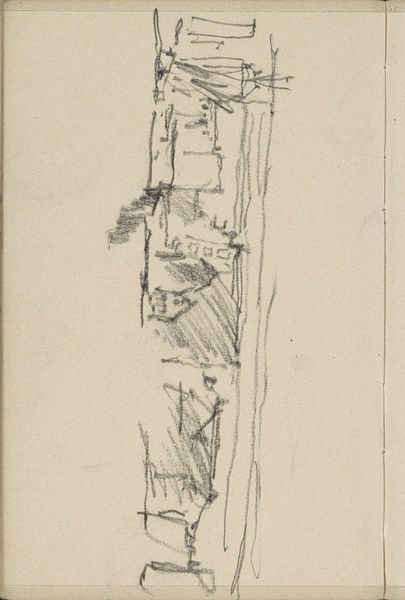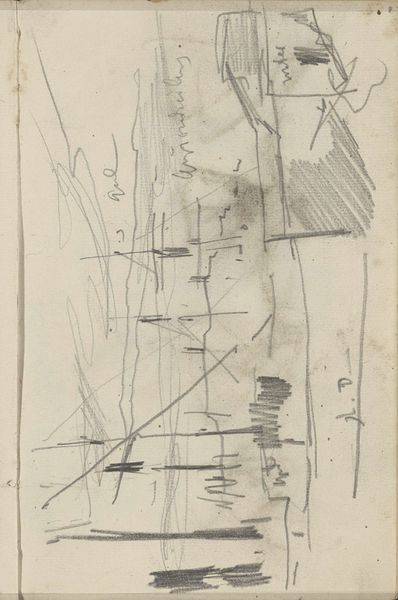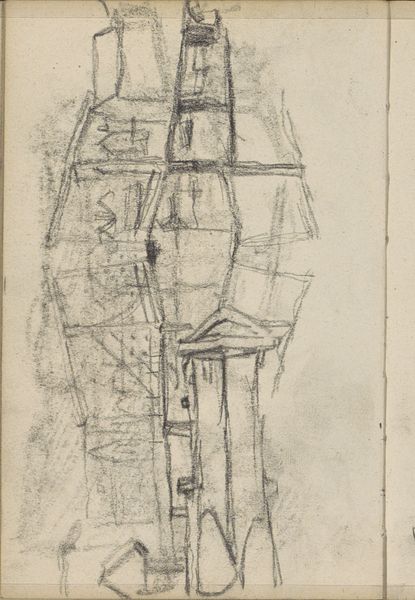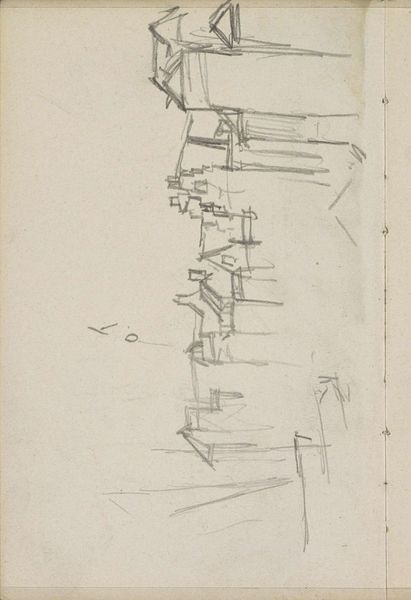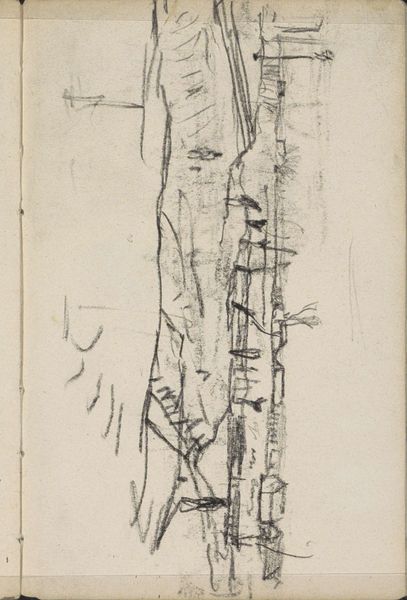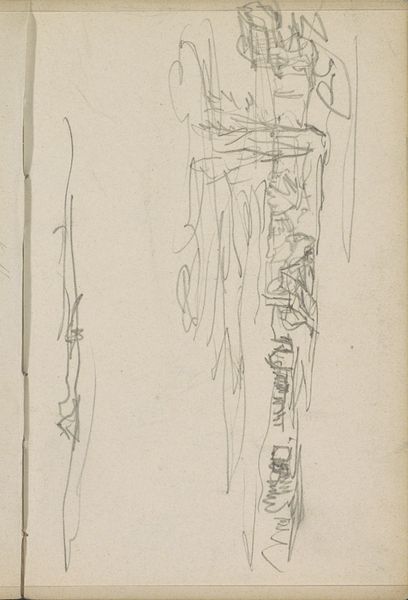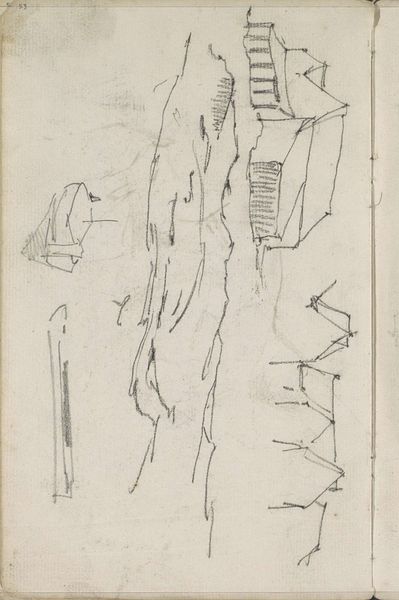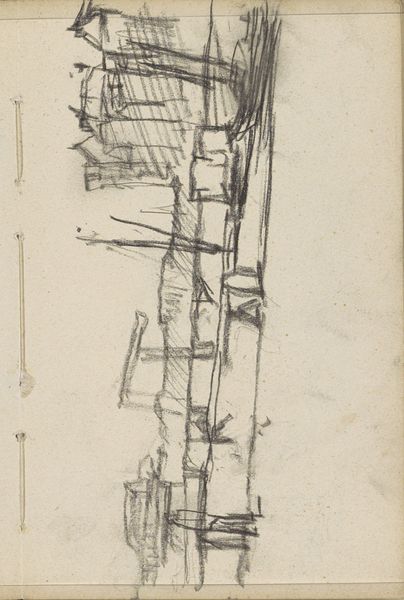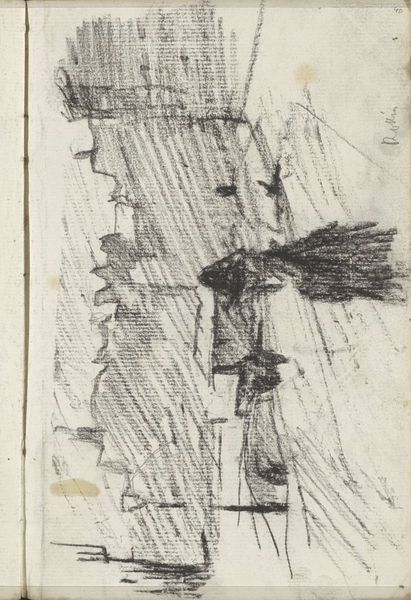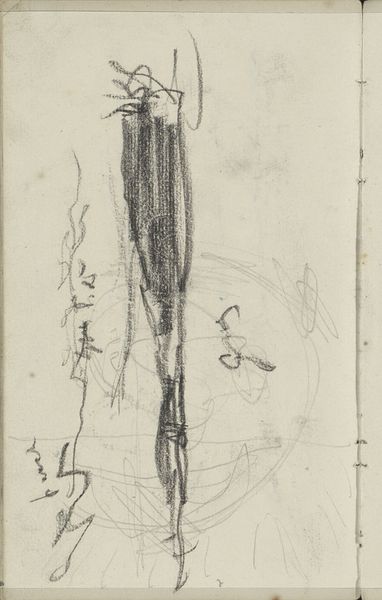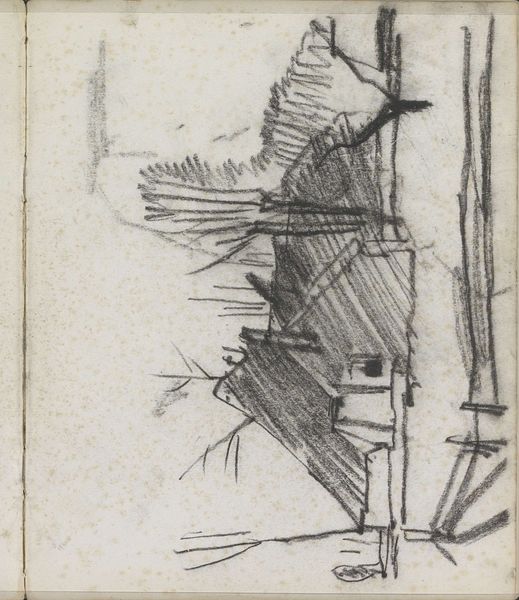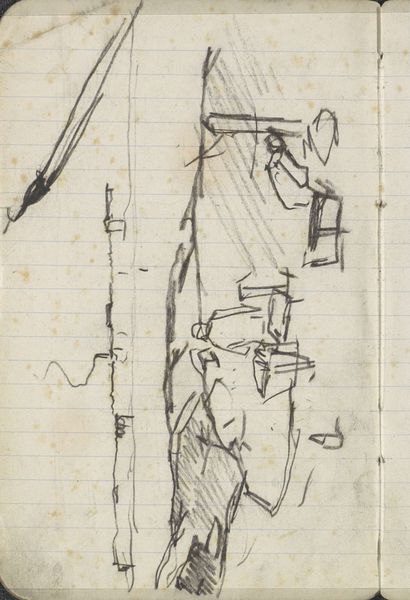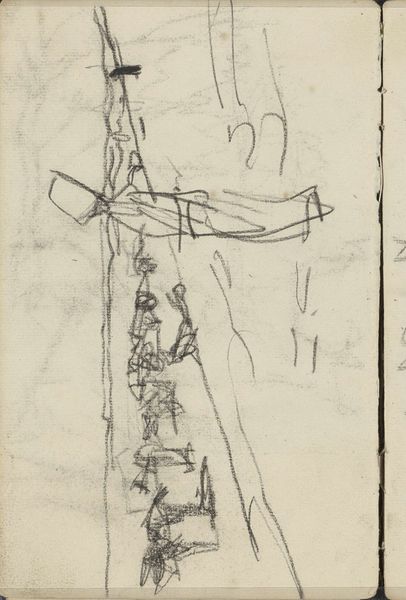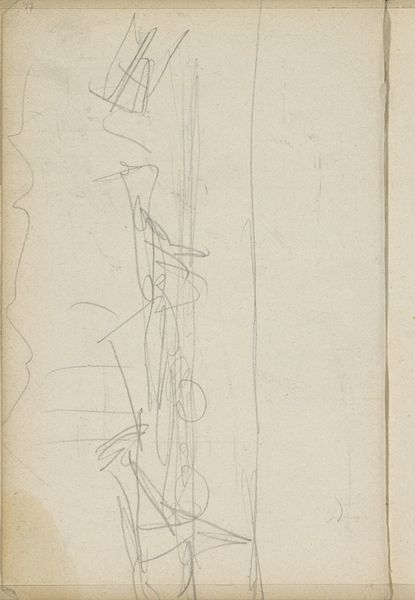
drawing, graphite
#
drawing
#
impressionism
#
landscape
#
graphite
#
cityscape
Copyright: Rijks Museum: Open Domain
Curator: Let’s turn our attention to George Hendrik Breitner’s “Gezicht op het Oosterpark te Amsterdam,” a drawing from 1888 housed right here at the Rijksmuseum. Editor: It has a stark, almost skeletal feel to it. A fleeting glance at architectural structure distilled down to graphite. It is visually raw. Curator: Exactly. Breitner, a key figure in the Amsterdam Impressionist movement, frequently used drawing, particularly in graphite, to quickly capture urban scenes. This sketch is a powerful testament to his practice of immediate and unvarnished observations. You see the scaffolding, the unfinished structures…the raw materials of a growing city. Editor: Considering Amsterdam’s rapid industrialization and urban expansion at the time, this piece acts as a snapshot of societal shifts. The construction itself embodies capitalist ambition and perhaps also hints at displacement of working-class communities as this new urban landscape emerges. One can almost hear the clamor of labor. Curator: Absolutely. The graphite, as a material, facilitates this quick and reproducible process. It aligns with the industrial modes of production burgeoning then. Breitner wasn’t interested in the polished presentation of high society but rather, he turned towards capturing the evolving material conditions of Amsterdam's working class and their relationship to this changing environment. Editor: You are absolutely right. It invites us to consider not only what is depicted but also what is deliberately left out—the absence of figures, of human life, creates a rather ghostly, unsettling atmosphere despite it being an open urban view. We see potential homes, places of business, but we have no sense of the people who will occupy those spaces. Curator: That tension between growth and anonymity is central to Breitner’s vision. For him, I suspect, it was about finding a method, a material, that could match the relentless pace of change itself. Editor: Indeed. Seeing this sketch now really highlights how potent an incomplete, ‘unfinished’ artwork can be when understood within a larger sociopolitical framework. Curator: Well said. It prompts a renewed understanding of how Breitner used material to reflect broader historical changes in Amsterdam's societal fabric. Editor: And it emphasizes the silent stories of change that hide in plain sight as architecture unfolds.
Comments
No comments
Be the first to comment and join the conversation on the ultimate creative platform.
